Disclaimer: This website contains affiliate links, from which Heritage Acres Market LLC may receive a small commission from the vendor on the sales of certain items, all at no cost to you. Please read our full disclosure for more information. Thank you for supporting Heritage Acres Market LLC!
Salmon Faverolles chickens are a threatened heritage breed that originated in France. Their friendly, docile temperaments and good looks make them popular with backyard chicken keeper. As winter layers, they can be a valuable addition to a predominantly summer-laying flock.
Is the Salmon Faverolles chicken right for your flock?
- Dual purpose breed can be used for meat and egg production
- Heritage breed that is suitable for children and beginners
- Attractive, unusual plumage and five toes
- Cold hardy and does well in a range of climates
Table of Contents
Background and History of the Breed
Like many other chicken breeds, the Faverolles get their name from their place of origin. Salmon Faverolles chickens originated in France and came from the Eure and Loire region, where they were bred by local farmers living in the villages of Faverolles and Houdan during the 1860s.
These early birds were a mixture of many different chicken breeds, including the Houdan, French Rennes, Brahma, Flemish Cuckoo, Dorking, and Malines, and were used to supply meat and eggs Paris markets.
One problem was that many Faverolles were relatively lightweight and didn’t meet the standards for meat production. As the urban population grew, Asiatic chicken breeds were imported, including Langshans, Brahmas, and Cochins. These birds had thin skin, white meat, and laid brown eggs.
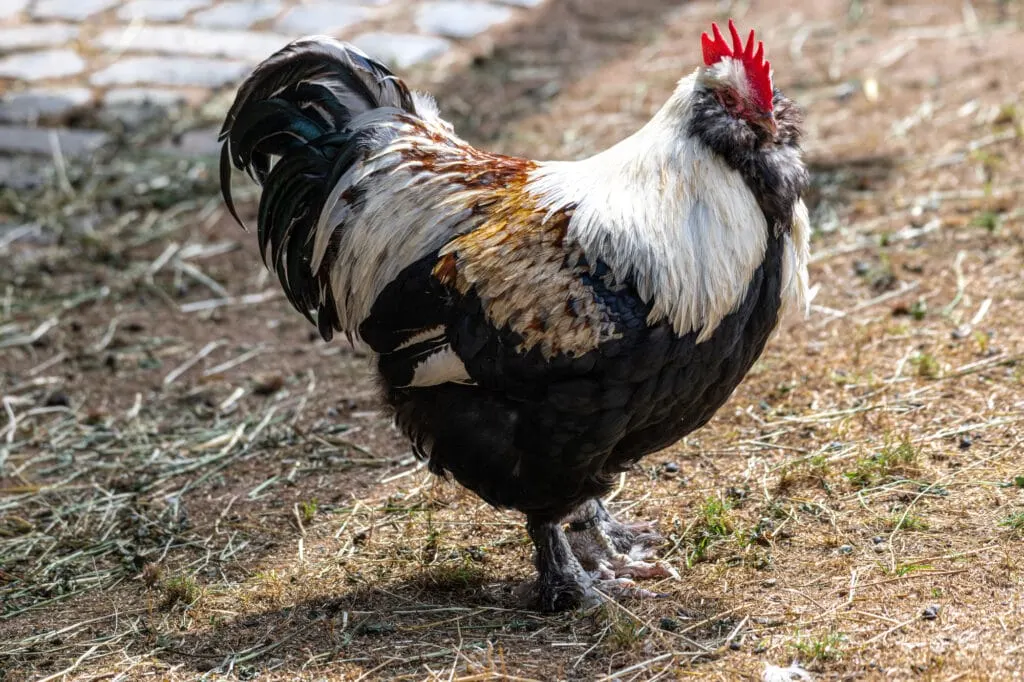
Faverolles were soon introduced to the Houdans and Dorkings, initially probably by accident, but as time went on there was careful selective breeding, and the standardized Salmon Faverolles chicken breed was first created around 1886.
This new bird was much heavier than its predecessor, making it more attractive as a dual purpose breed, and it brought a better price for the market traders.
They coined the nickname “Tete de hibou,” which means “head of an owl.” This was because of the Faverolles feathery face and their ability to forage in woodland.
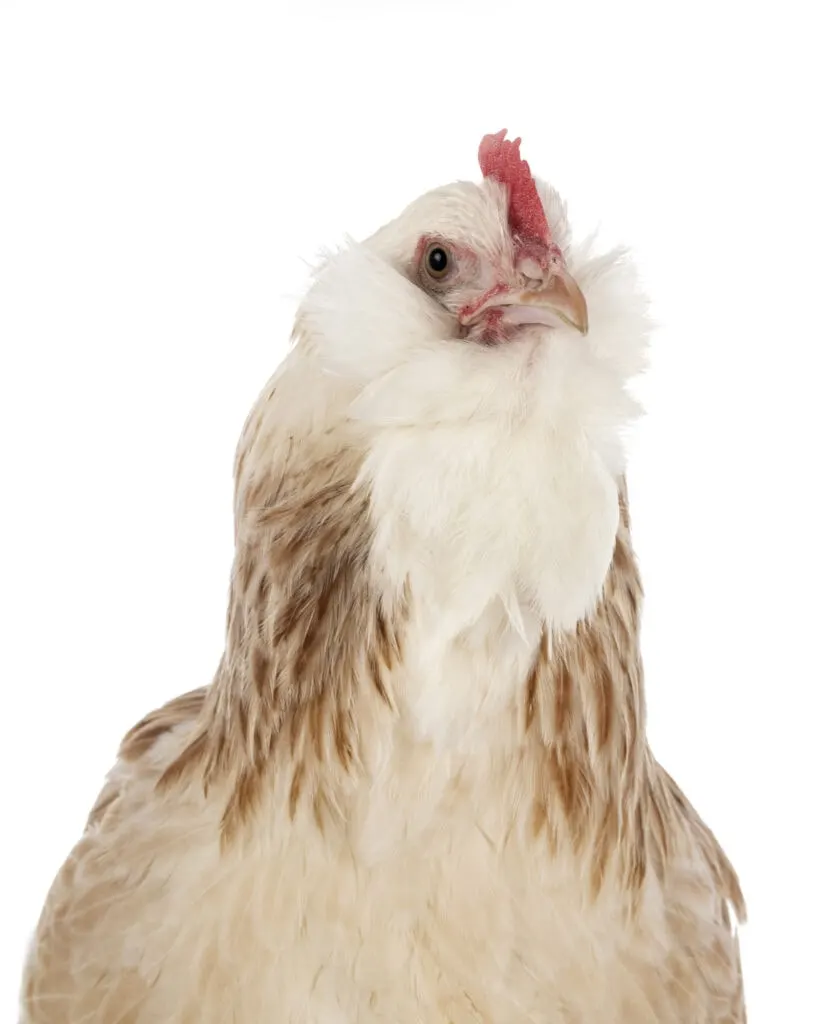
It is incorrect to call a single Faverolles bird a “Faverolle” without the -s on the end of the word, as that is not their proper name. They came from the town of Faverolles, and thus, both lone or multiple birds are called Faverolles.
They quickly established themselves in France and were standardized in 1893. By 1894 Faverolles had been introduced to England. They were finally imported to America by Dr. A.H. Phelps of Glan Falls, New York, between 1901 and 1902, where they were welcomed with great enthusiasm. They are now considered a heritage breed.
The early forerunners to battery cages were being trialed in France during the late 1890s, and although Houdans didn’t take to them at all, Faverolles did. This caused an increase in their popularity at the time and triggered the Houdan Club de France to change its name and become the Houdan Faverolles Club de France.
The Faverolles standard was revised in 1909 and by 1929 had spread through countries surrounding France, including Germany, Austria, and Switzerland.
Faverolles experienced a sharp decline during the Second World War, like many other chicken varieties, due to the elimination of the distribution networks. By the 1960s and 70s, the birds had almost disappeared, and it was only due to the work of the Houdan-Faverolles Club of France that the animal did not vanish altogether.
Bantam Faverolles first appeared in the 1950s.
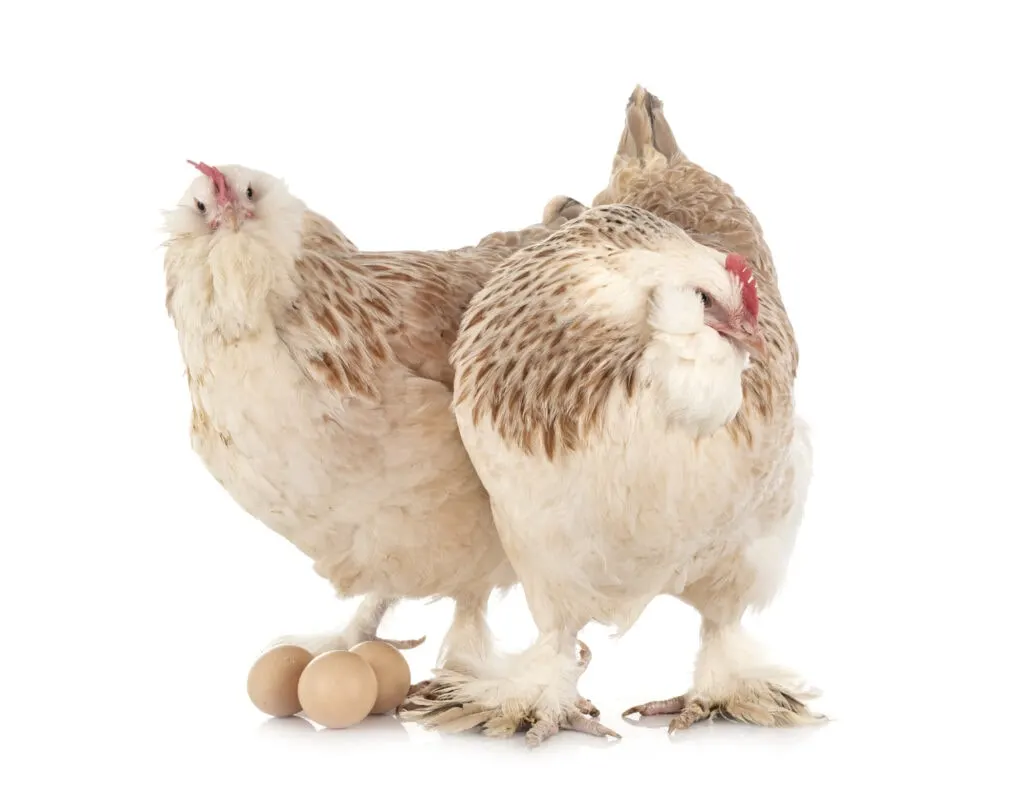
Temperament and Behavior
Salmon Faverolles have a very friendly and curious temperament. They always appear busy and scurry around as if they have a to-do list a mile long, but despite this, they are calm and easy to care for.
They appear to enjoy human company, and those used to being around people will run to you as you approach, no doubt in the hopes of receiving a tasty treat. They make great pets for kids and are relatively easy for beginners, providing plenty of research on their correct care.
There is some debate about how broody Salmon Faverolles hens are. Those bred by a non-commercial breeder are more likely to become broody than those from large hatcheries. Those that do brood will remain on their eggs until hatching and make good mothers.
They get along well with other flock members in the middle of the pecking order but shouldn’t be kept with the very active, more dominant breeds as they may be bullied.
The Faverolles hen tends to be quite chatty, and the rooster will naturally crow. They are about medium on the noise scale.
Salmon Faverolles roosters are generally reported as being non-aggressive and calm. However, when it comes to roosters, there are always exceptions, and a lot comes down to how you treat your boy. He should respect and trust you.
It is not recommended to keep Faverolles in a wide-open free-range environment. Although they are pretty good foragers and enjoy being in woodland, they are prone to attack by predators as their fluffy faces can obscure their vision.
With their loose, downy feathering, they are cold hardy and will also fair pretty well in heat, providing they are given adequate cool shade and fresh water. The easiest way to give fluffy faced chickens like the Salmon Faverolles water is with chicken nipple waterers. These waterers keep the birds muff dry, which is especially important in the winter.
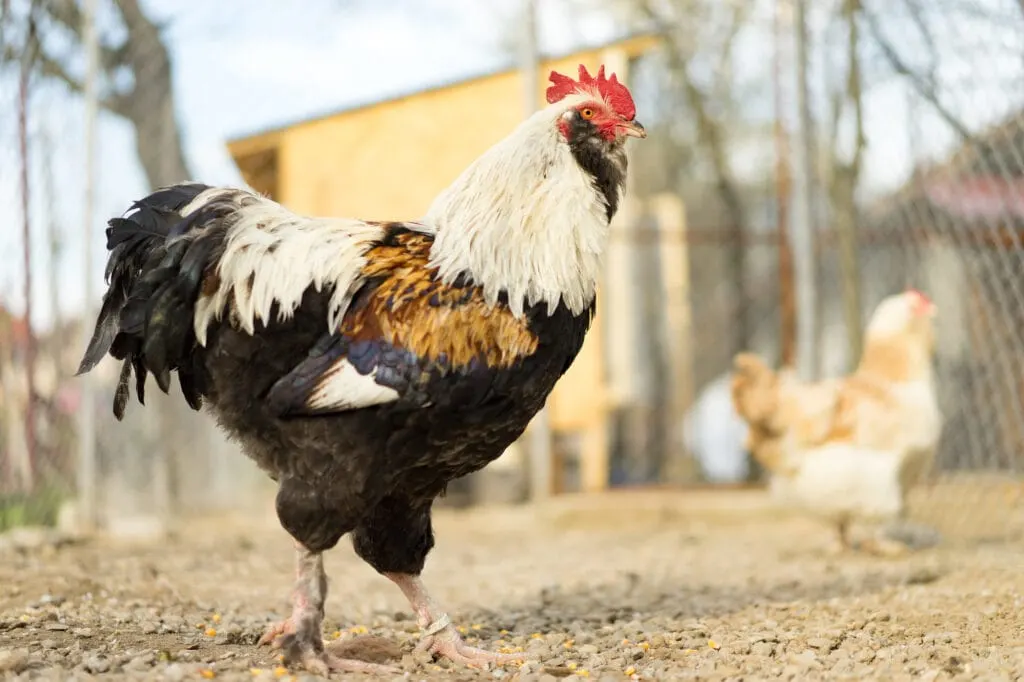
Breed Specifics and Traits
Initially, Salmon Faverolles were created to be heavy dual-purpose meat and egg birds to satisfy the needs of the Parisian market. Today they are used more as friendly backyard chicken for laying a fair number of eggs and, depending on the strain, are maintain a steady egg production even through the winter months. Due to their attractive appearance, they make excellent exhibition birds, particularly as they won’t mind being penned up for many hours at a time.
At maturity, the roosters can weigh around 8 pounds while the Salmon Faverolles hen weighs in at around 6 ½ pounds. The bantam Salmon Faverolles rooster averages about 30 ounces, and hens are 26 ounces. They live for approximately 5 to 7 years, although this can be longer with good care.
Salmon Faverolles are very pleasing to look at. Their feathered legs, beard, and muffs make them slightly comical, and the hens have an attractive coloration and feather pattern.
The comb is red and single and should exhibit five defined points. They have very small wattles and a pale color beak with reddish bay eyes.
The body is deep, broad, and wide across the back and breast. They also exhibit a deep keel. Overall their shape is deceptive, making them appear larger than they really are.
Their feet have five toes, and the legs are feathered with whitish skin color. The skin of the body is also white.
Faverolles mature a little younger than some other heritage breeds, at around 19 weeks of age. Hens will usually start laying from 20 weeks old.
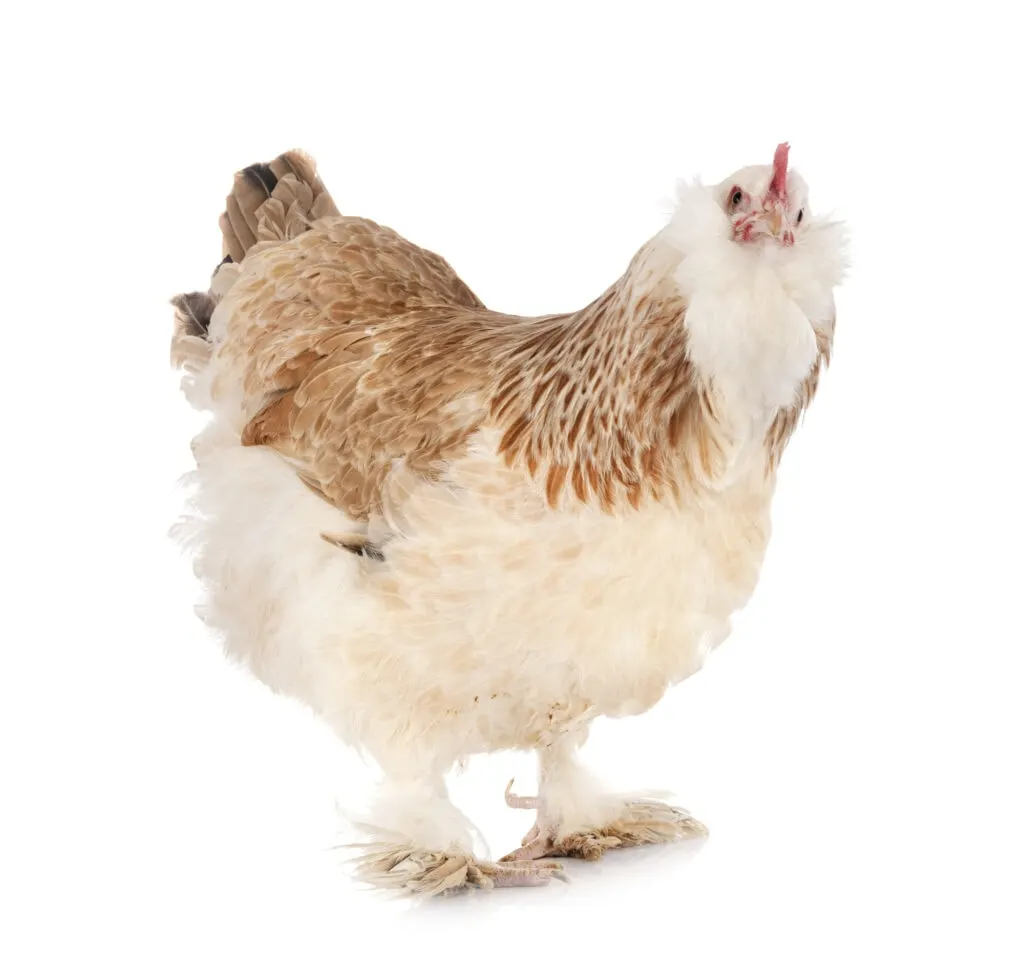
Color Varieties
Apart from Salmon, there are many other Faverolles chicken colors, but the American Poultry Association recognizes only Salmon and white. The Salmon was first accepted into the standard in 1914 and the white far more recently in 1981.
Other Faverolles colors include Buff, Black, Ermine, Laced Blue, Splash, and Cuckoo.
Salmon Faverolles hens have a pale creamy bronze breast with a delicate speckling of darker Salmon feathers. Their lower half is even paler, and they have a darker Salmony bronze over their back, head, and wings, with the darkest feathers around the neck. The darker feathers over the back and tail are often laced with a cream edge and central line. Their down is soft, fluffy, and grayish.
They have a very cuddly appearance with their loose fluffy feathers and pale speckled beards.
Roosters are very different in appearance from the hens. They have black beards and a black breast with long, pale, straw color hackles and saddle feathers. The wings are a mottled, deep bronze and pale cream. The primary flight feathers are black with a white, triangular tip.
The primary tail feathers are also black with a beetle green sheen, often with a red-brown edge and shorter red-brown feathering. The legs are black, and the down is white or dark grey.
Bantams
Bantam Faverolles, which came into their own in the 1950s, also come in a variety of colors, including not only Salmon and white but also ermine and cuckoo.
Chicks
Baby chicks are born yellow with fluffy legs and feet and are pretty adorable. They begin to feather out quickly, and you can quickly tell if you have any roosters as the chest feathers are black.
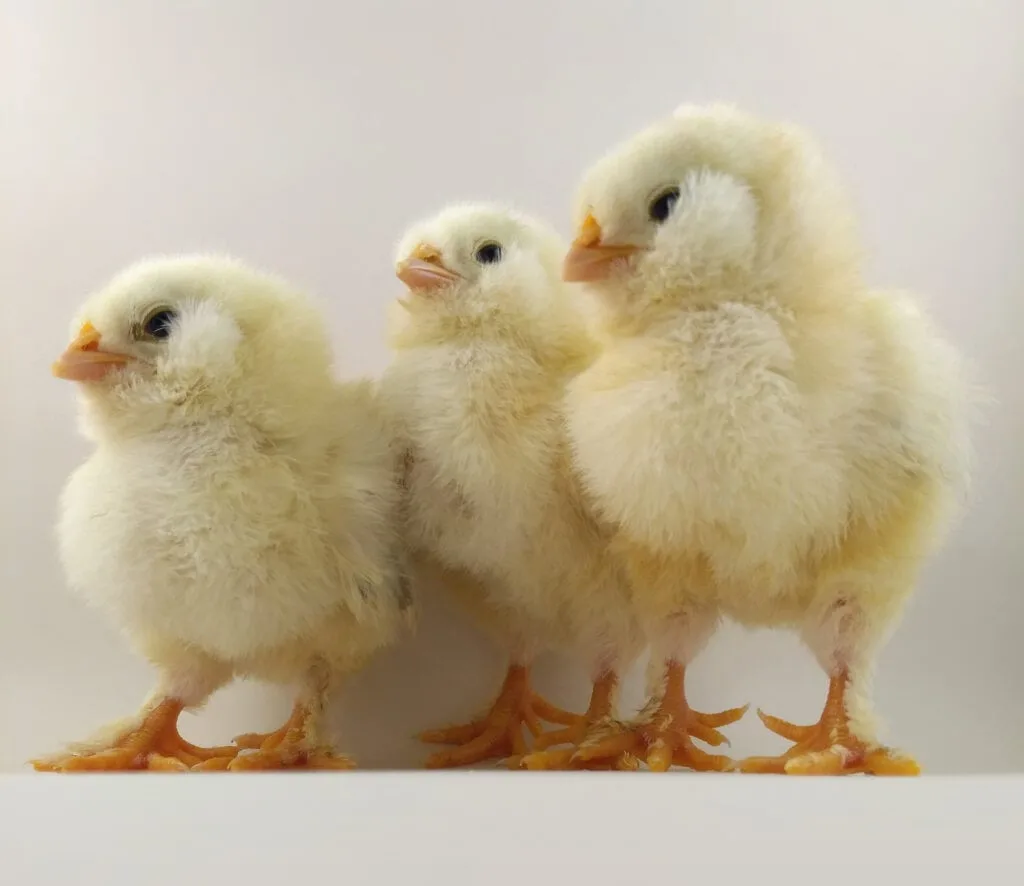
Health
There are no particular health conditions associated with Salmon Faverolles. Their heavily feathered beards need regular checking for lice, and the feathered legs are prone to scaly leg mites. For this reason, it is wise to utilize regular anti-lice and mite treatments to prevent problems before they can start.
As with other chickens, maintaining a clean environment and providing the correct diet with adequate amounts of grit and crushed oyster shells will help keep your birds healthy and productive. Worming should also be done routinely.
Salmon Faverolles chicks can become dehydrated in a brooder or during shipping, and it is essential to ensure they are given sufficient clean water.
Roosts and perches need to be a little lower than other chicken breeds, as the birds can easily damage their 5th toe.
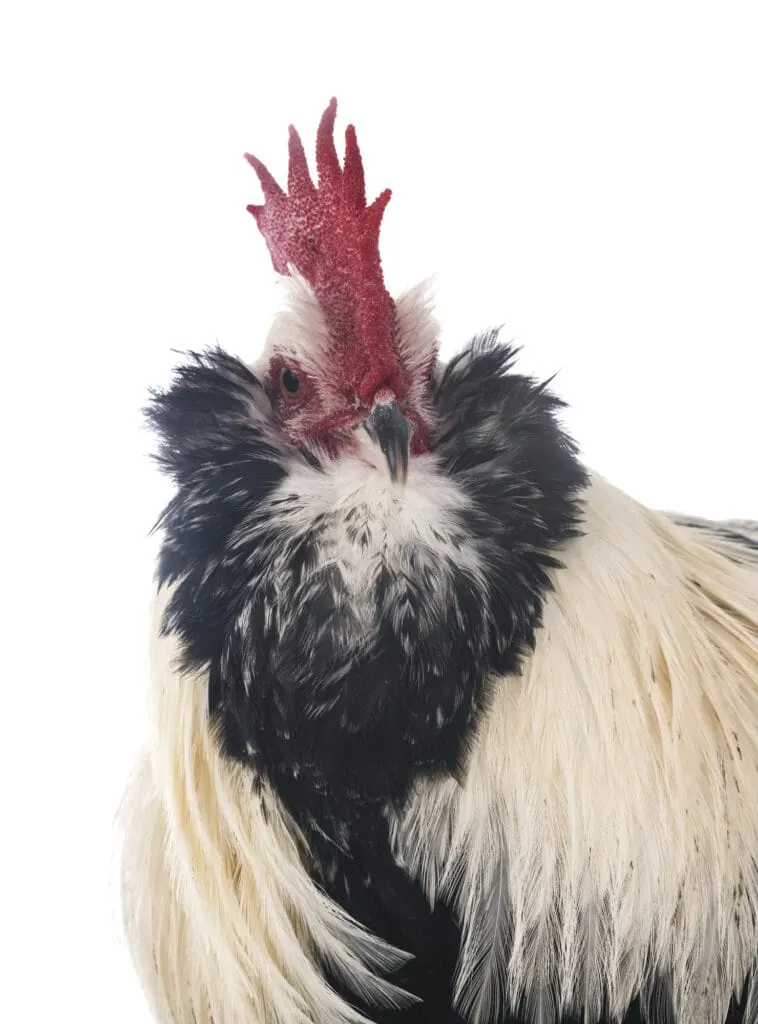
Eggs
Salmon Faverolles lay off-white, cream tinted eggs of medium size. The hens have average egg production and will typically produce between 160 to 200 eggs per year and continue to lay over winter.
The average age for a hen to start laying is about 20 weeks, although some will begin earlier than this.
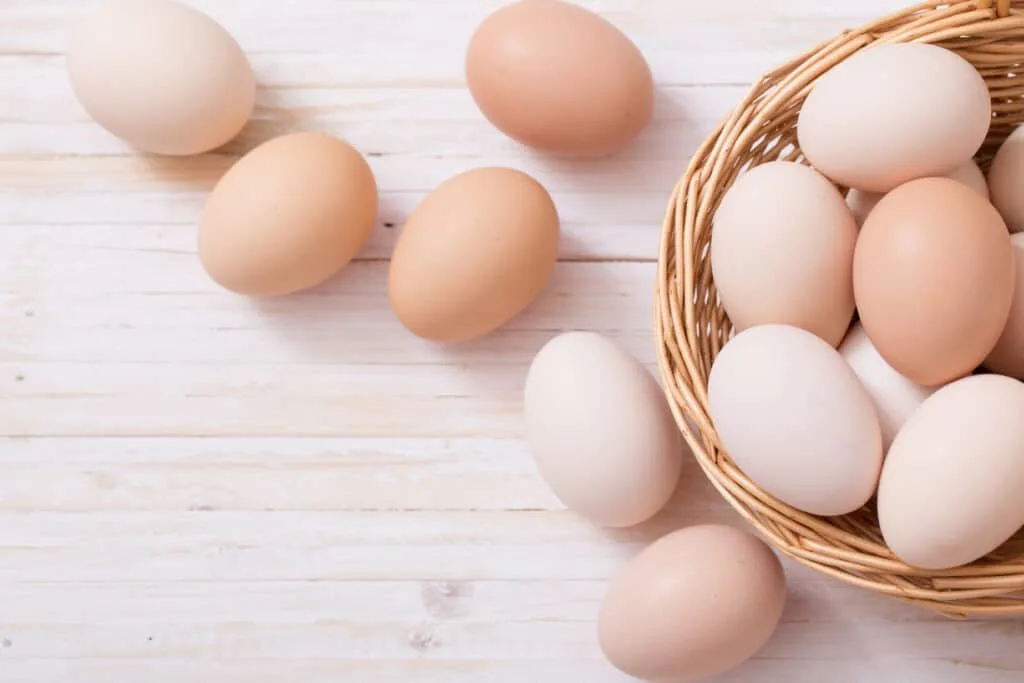
Where to Buy
Salmon Faverolles are a rare breed but are becoming more popular with backyard chicken enthusiasts due to their kind natures and attractive looks.
One of the easiest ways to find Salmon Faverolles is to search for breeders and hatcheries on PoultryFinder.com.
There are also several Salmon Faverolles associations in North America which you could contact for information about breeders in your area.
Cackle Hatchery offers Salmon Faverolles chick and hatching eggs at a very affordable price, which can be shipped to your door. Cackle Hatchery is our preferred and recommended hatchery. While most hatcheries require orders of at least 25 chicks, you can buy as few as three chicks from Cackle. They are a family owned hatchery and have been in business since 1936.
Summary
Salmon Faverolles are a delightful chicken breed that is great with children as they seem to enjoy the company of humans. Their happy-go-lucky natures and cute fluffiness, right down to their feet, makes them a firm farm favorite.
Although currently on the threatened list, they are gaining in popularity and make adorable pets and great showing birds for the Faverolles fancier.

PatriciaAnne
Friday 30th of December 2022
Hi Nicole, I really enjoyed your article on the Salmon Faverolles. I learned so much! I like that. you encouraged the correction Faverolle/Faverolles and I am going to investigate some of the fascinating links. you provided. I hope to have a Faverolles rooster and some ladies too probably. I will raise by hand and buy straight run. I see that they are easy to sex later. Do you have thoughts on this? I have had chickens in a backyard flock for a decade. I love the heritage breeds. We lost Louisa May Alcott our Australorp beauty to a hawk the other day. Still sad. Winter is tough as a free range for quality of daily life.
Thank you for the great piece. Very well written. ~PatriciaAnne